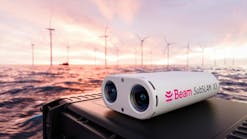The business of petroleum geosciences research and development has been in the news quite a bit lately. First,Schlumberger has opened a new research and geoengineering center in Rio de Janeiro. The Brazil Research and Geoengineering Center aims to integrate geosciences with engineering to improve hydrocarbon production and recovery from the complex deepwater reservoirs and pre-salt carbonates offshore Brazil.
Carnarvon basin seismic dataset available. A large-scale 3D multi-client seismic dataset covering more than 30,000 sq km (11,583 sq mi) of the Carnarvon basin offshore northwestern Australia is available from Spectrum ASB. The Spectrum subsidiary says most hydrocarbons in the basin are from Upper Jurassic Dingo claystone, plus some other possible strata. In the outboard Rankin Platform, giant gas accumulations as well as oil and gas accumulations along the inboard eastern Gipsy-Rose-Lee trend are sourced from a delta-based Triassic to Middle Jurassic sequence. The oil reservoir is primarily in the Windalia sandstone of the Muderong shale and the Lower Cretaceous Barrow Group. Late Cretaceous and middle Miocene faulted anticlines provide structural traps. A range of plays show within this basin, including rollover anticlines and fault blocks associated with antithetic faults, stratigraphic traps, pinchouts and onlap plays.
The new center includes a Geoengineering Research Center, a Geoengineering Technology Center, and a GeoSolutions Hub in addition to a number of reservoir laboratories. The Research Center, designed to work with both customers and academia, will conduct research on pre-salt formations and study their optimal development. The Geoengineering Technology Center will pursue geoscience workflows using Schlumberger’s Ocean application development and Petrel seismic-to-simulation software. Regional solutions to the integration of data from seismic and other techniques will be developed in the WesternGeco GeoSolutions Hub while three reservoir laboratories have facilities to test and evaluate reservoir rocks and fluids.
The Brazil Research and Geoengineering Center covers 10,000 sq m (107,639 sq ft) and when fully staffed, up to 300 scientists, engineers and technical staff will work in multidisciplinary teams.
The new facility is near the leading academic expertise of the Federal University of Rio de Janeiro, and is located on the same campus as Petrobras’ CENPES Research Center.
“We are very excited to be opening this new center here in Rio de Janeiro,” said Ana Zambelli, Brazil GeoMarket manager, Schlumberger. “Future oil and gas production will increasingly lie in technically complex environments such as pre-salt carbonates and deepwater areas and we expect this facility, the first multinational research center in Brazil, to play an important role in responding to these and other demanding technical challenges.”
Geotrace and BP have teamed to further develop POCS (Projection Onto a Convex Set) technology for use in seismic data processing for the oil and gas industry. BP originally developed POCS technology to interpolate – or reconstruct – data.
POCS technology uses information surrounding data sets that may not be complete to reconstruct that missing data.
“By providing missing information, POCS’ primary advantage is that it helps minimize risk in assessing a reservoir,” said Bill Schrom, CEO of Geotrace. “The technology opens doors that were previously closed by allowing geoscientists to build missing data from the information they already have.”
“Ideally, geoscientists acquire all the data they need to help them understand reservoir formations. However, in some cases, certain valuable information may be missed in initial data acquisition. This is where POCS plays a valuable role in reconstructing missing data and eliminating the cost of acquiring new data to fill in the gaps,” Schrom explained.
POCS technology is commonly used in many fields where data are corrupted or missing, such as Synthetic Aperture Radar (SAR) and Magnetic Resonance Imaging (MRI).
CGGVeritas has signed a term sheet with Petrovietnam Technical Services Corp. to create a joint venture to operate 2D and 3D marine seismic vessels, primarily in Vietnamese waters.
The joint venture will provide seismic data acquisition services for oil and gas clients operating in Vietnam and the region.
“Strengthening long-term relationships with our clients is an important priority for CGGVeritas,” says Jean-Georges Malcor, CEO. “This marine joint venture with Petrovietnam further materializes the well established long term cooperation between our two companies that is founded on technology and a deep knowledge of the local geological content. The full breadth of CGGVeritas will support this joint venture focusing on developing seismic marine acquisition and processing solutions dedicated to the Vietnamese offshore exploration challenges.”
A new marine seismic company is in the midst of forming. After a thorough strategic review of current business model and potential new business opportunities,Dolphin Interconnect Solutions ASA decided the future of the offshore seismic market is promising, with anticipated strong growth in demand for seismic services.
Dolphin proposes to raise new equity of approximately NOK 360 million ($60 million) in a private placement to facilitate its entrance into the marine seismic industry.
The company says total investments in connection with establishing a marine seismic division within Dolphin to be in the area of NOK 800 million ($133.6 million).
Dolphin plans to offer a full range of marine geophysical services, including contract seismic, multi-client, and processing partnerships.
“The outlook in the offshore market looks promising and we expect strong growth in demand for seismic services,” says Chairman of the Board of Dolphin Atle Jacobsen. “The agreement with GC Rieber Shipping will secure a high grade of vessel flexibility and low operational risk. The high-capacity vessels will not add to the already known industry streamer count. Seismic industry is a people’s business and I very pleased that we have attracted a tier-one group of people with extensive experience from the seismic industry.”
ApparentlyPetroleum Geo-Services shares Dolphin’s view of the marine seismic future. PGS issued $275 million of equity to help pay for the construction of two fifth-generation Ramform vessels (high density streamers) at a cost of $250 million apiece. Delivery of the first vessel is expected in 1Q 2013, with the second coming to market a year later.
Offshore Articles Archives
View Oil and Gas Articles on PennEnergy.com






